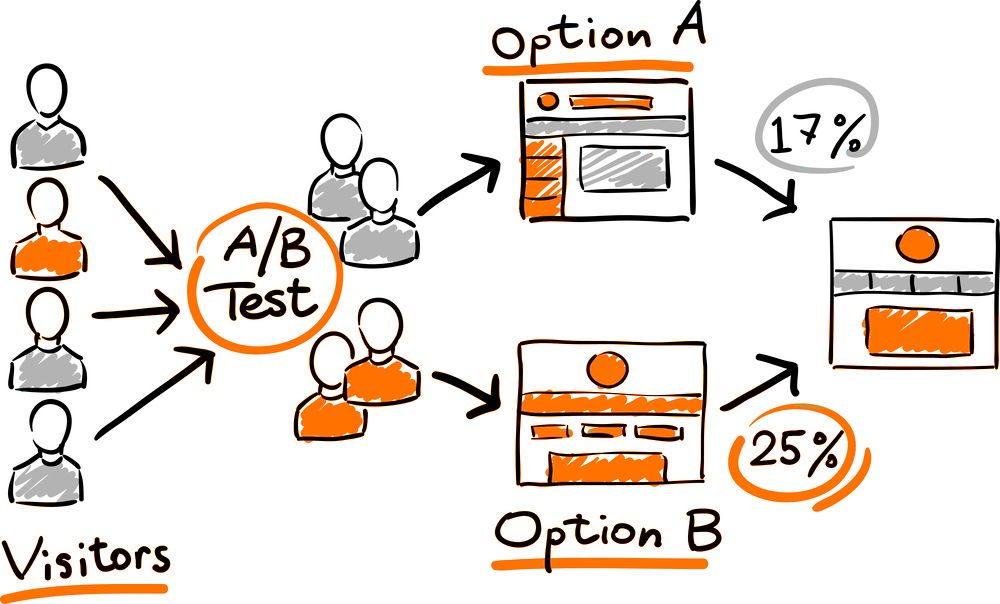Conversion Rate Optimization (CRO) is the practice of improving your website to increase the percentage of visitors who complete a desired action, such as making a purchase, filling out a form, or subscribing to a newsletter. Effective CRO strategies can significantly enhance your website’s performance, improve user experience, and boost your business’s bottom line. This article delves into the key aspects of CRO and provides actionable tips to optimize your conversion rates.
Understanding Conversion Rate Optimization (CRO)
The conversion rate is the percentage of visitors who complete a specific goal on your website. For example, if 100 visitors land on your product page and 5 make a purchase, your conversion rate is 5%. CRO focuses on understanding visitor behavior, identifying barriers to conversion, and implementing changes to overcome these obstacles.
Benefits of CRO
- Increased Revenue: Higher conversion rates translate to more sales and revenue without increasing your traffic acquisition costs.
- Enhanced User Experience: CRO involves improving the overall user experience, leading to increased customer satisfaction and loyalty.
- Better ROI: By converting a higher percentage of your existing traffic, you maximize the return on investment (ROI) from your marketing efforts.
- Data-Driven Decisions: CRO relies on data and analytics to make informed decisions, reducing guesswork and increasing the effectiveness of your strategies.
Key Elements of CRO
- User Research and Analysis
Understanding your audience and their behavior is the foundation of effective CRO. Use tools like Google Analytics, heatmaps, and user surveys to gather insights into how visitors interact with your site. Key metrics to analyze include:
- Bounce Rate: The percentage of visitors who leave your site after viewing only one page.
- Exit Rate: The percentage of visitors who leave your site from a specific page.
- Average Session Duration: The average time visitors spend on your site.
- User Flow: The path visitors take through your site.
- A/B Testing
A/B testing, also known as split testing, involves comparing two versions of a webpage to determine which one performs better. By testing different elements such as headlines, images, calls to action, and layouts, you can identify what resonates most with your audience. Steps for effective A/B testing:
- Form a Hypothesis: Identify the element you want to test and form a hypothesis about how changes will impact conversions.
- Create Variations: Develop two versions of the page, one as the control and the other with the changes.
- Run the Test: Split your traffic equally between the two versions and collect data over a set period.
- Analyze Results: Use statistical analysis to determine which version performed better and implement the winning variation.
- Optimizing Landing Pages
Landing pages play a critical role in driving conversions. Ensure your landing pages are optimized for clarity, relevance, and user experience. Key elements to focus on:
- Clear and Compelling Headlines: Grab visitors’ attention with concise and persuasive headlines.
- Engaging Visuals: Use high-quality images and videos to enhance the appeal of your landing pages.
- Strong Calls to Action (CTAs): Make your CTAs stand out with contrasting colors and actionable language.
- Minimal Distractions: Keep your landing pages focused and free from unnecessary elements that could divert attention.
- Improving Website Speed
Website speed is a crucial factor in user experience and conversion rates. Slow-loading pages can lead to high bounce rates and lost opportunities. Tips to improve website speed:
- Compress Images: Reduce the file size of images without compromising quality.
- Minimize HTTP Requests: Limit the number of elements on your pages to reduce load times.
- Enable Browser Caching: Store static files locally to speed up repeat visits.
- Optimize Code: Minify CSS, JavaScript, and HTML to reduce file sizes and improve load times.
- Enhancing Mobile Experience
With an increasing number of users accessing websites via mobile devices, optimizing for mobile is essential. Ensure your website is mobile-friendly by:
- Responsive Design: Use a responsive design that adapts to different screen sizes and orientations.
- Simplified Navigation: Make navigation intuitive and easy to use on smaller screens.
- Touch-Friendly Elements: Ensure buttons and links are large enough to be easily tapped.
- Personalization
Personalizing your website content based on user behavior and preferences can significantly boost conversions. Use data to tailor your messages, offers, and recommendations to individual users. Examples of personalization include:
- Dynamic Content: Display content based on user demographics, location, or past behaviour.
- Product Recommendations: Suggest products or services based on user’s previous interactions with your site.
- Targeted Offers: Provide special deals or discounts to specific user segments.
Conclusion
Conversion Rate Optimization (CRO) is a critical component of a successful digital marketing strategy. By understanding your audience, conducting A/B tests, optimizing landing pages, improving website speed, enhancing the mobile experience, and personalizing content, you can significantly increase your website’s conversion rates. Implement these CRO strategies to unlock the full potential of your website and achieve your business goals.





Saved as a favorite, I really like your blog!